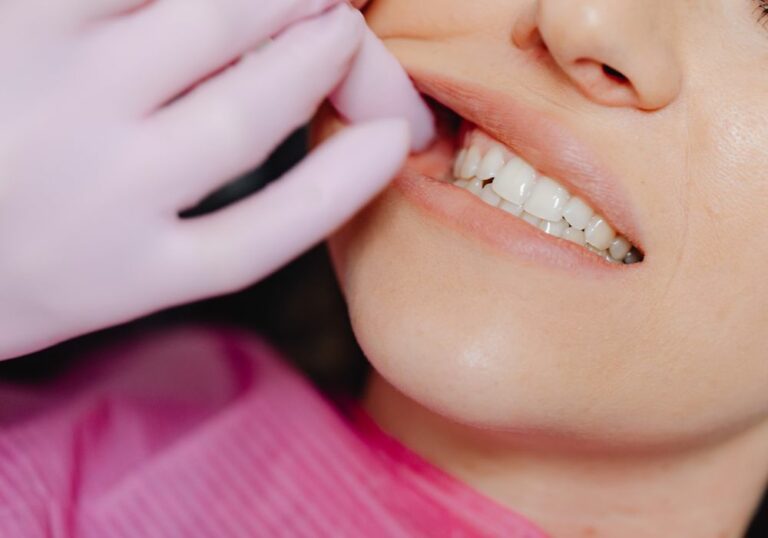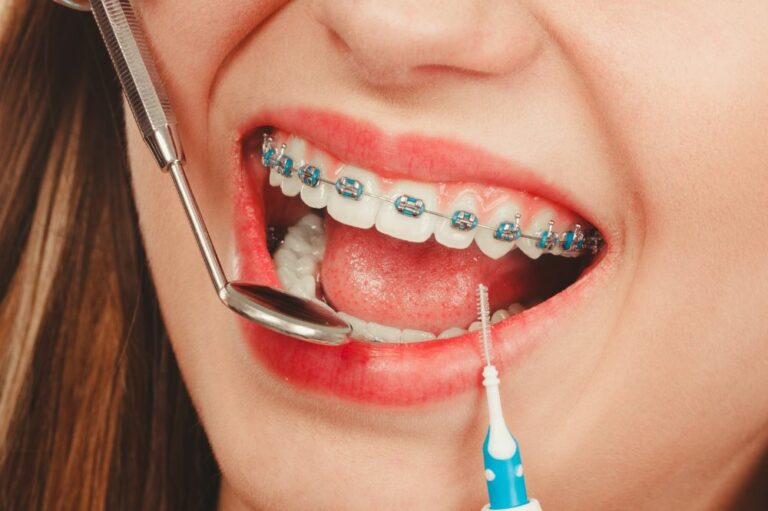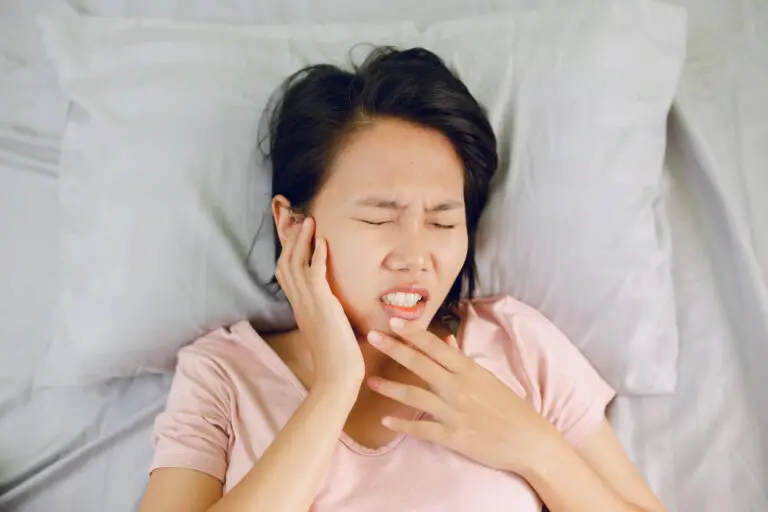Losing or breaking a fake tooth can be an extremely unpleasant and stressful experience. However, with some simple at-home steps, you may be able to temporarily reattach a loose denture tooth or replace a lost one as a short-term solution before seeing your dentist. This detailed article explores everything you need to know about safely and effectively gluing a detached fake tooth back into place until you can receive professional dental treatment.
Causes of loose fake teeth

Fake teeth on partial or full dentures or dental implants can come loose or fall out for several reasons:
- Natural oral wear and tear over months or years of use
- Damage to the base from dropped dentures
- Excessive biting force such as hard, crunchy, or sticky foods
- A poor fit of the base denture or dental implant
- Weakening of temporary adhesive bonds over time
- Deterioration of dental crowns or implants
- Trauma or injury to the mouth, face, or teeth
Knowing the underlying cause of the detachment can help guide next steps in care. Loose fake teeth due to ill-fitting bases or worn materials likely need replacement of the entire appliance by a dentist.
Signs your fake tooth may be loose
Be alert for any of these signs that a fake tooth may be becoming detached:
- The tooth moves or jiggles when touched or during eating
- Gaps, bubbles, or cracks forming around the tooth and gum line
- Food getting commonly stuck around the tooth
- A bad smell or poor taste around the tooth
- Changes in your bite alignment or ability to chew
- Increased difficulty speaking or pronouncing certain words
- Tooth pain when you bite down or eat
Don’t ignore these warning signs – call your dentist promptly if you notice any changes in the fit or comfort of your fake teeth. They can fully reattach teeth early on before complete detachment occurs.
What you need to glue a fake tooth
Before attempting to glue a loose fake tooth, make sure you have the following supplies:
- The loose denture tooth that fell out
- Denture adhesive cream or paste
- Q-tips
- Dental wax
- Super glue or denture repair kit adhesive
- Small sharp tool like a toothpick or dental tool (optional)
- Hand mirror
- Good lighting
- Cotton pads or soft towel
Only use adhesives designed specifically for dental appliances like dentures. Avoid household glues – these contain toxic compounds unsafe for use in the mouth. Let’s look closer at adhesive options:
Denture adhesive cream or paste
Poligrip, Fixodent, and Effergrip are popular examples of oral-safe denture creams available over-the-counter that can be used to temporarily re-adhere a loose fake tooth. These pastes contain active compounds like zinc, sodium alginate, and mineral oil that help securely adhere the denture tooth to the gum ridge or neighboring teeth. Follow individual brand instructions carefully.
Apply only a thin layer of cream – excessive amounts can make adhesion harder. The creamy texture fills micro gaps between the tooth base and surface for tighter bonding friction. Rinse out your mouth after 12 hours maximum to prevent gum irritation.
Dental wax
Kerr’s Sticky Wax or other dental wax products can be rolled into a small ball or rod then used to help anchor the fake tooth in place. The wax is sticky and malleable to help fill gaps between the tooth and base surface and provides light holding power. Avoid hot waxes that could distort tooth shape when applied.
Super glue or denture repair kit adhesive
Oral-safe super glues or denture repair kit adhesives sold at pharmacies can work in a pinch for emergency adhesion. However, take care applying only a tiny amount on detached plastic or porcelain teeth. The bonding power of cyanoacrylate dental glues wears off much more quickly with mouth exposure compared to specialized denture pastes or dental cements. Avoid using household super glues – these can be highly toxic if ingested.
Other helpful supplies
- Q-tips, toothpicks, dental tools, and small brushes can all help gain better access and visibility when working inside your mouth to re-attach a loose tooth.
- A bright desk lamp, flashlight, or headlamp can provide the strong lighting needed to see small tooth details.
- Soft cotton pads or towels help gently dry bonding surfaces before applying adhesive.
- Hand mirrors let you visually confirm proper tooth placement.
Always take your time and be patient – trying to glue a small tooth back into place inside your mouth takes concentration and care. Have a family member assist if available.
Step-by-step instructions
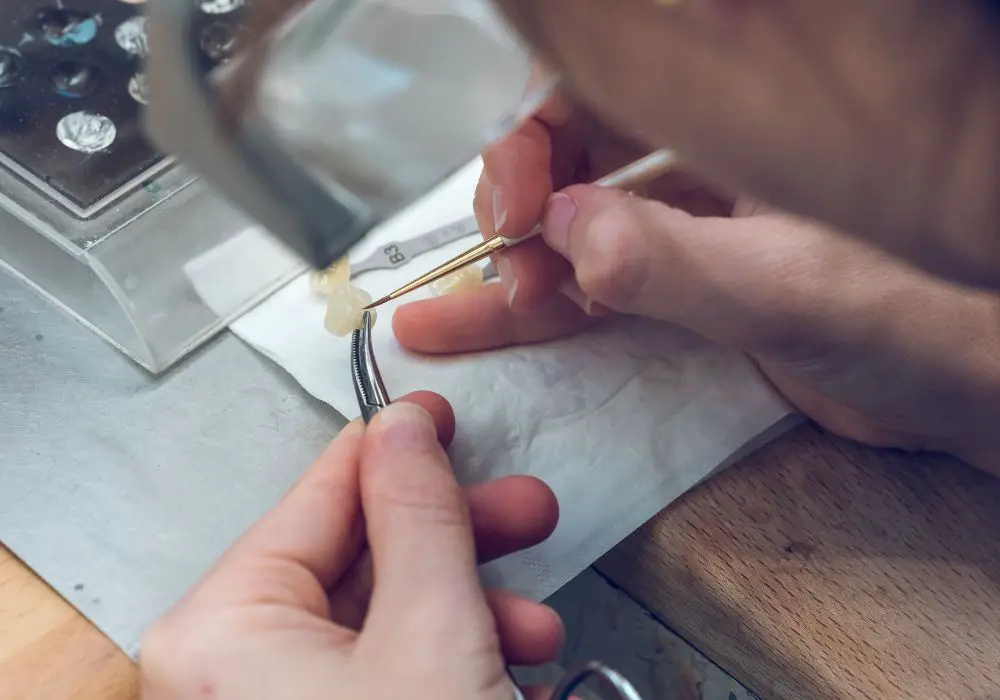
Follow these steps to temporarily re-adhere a loose fake tooth as an emergency repair:
1. Rinse the tooth
If the tooth fully detached, throughly rinse it under warm running water to remove any food, debris, or saliva. Gently brush with a soft toothbrush if needed to dislodge particles without damaging the tooth surface.
2. Dry the bonding area
Use a Q-tip, gentle blotting, or soft towel to thoroughly dry both the surface of the detached tooth and the exact spot it belongs on the neighboring teeth or gum ridge. Adhesives bind most strongly to clean, dry surfaces.
3. Rough up smooth surfaces
Use fine grit sandpaper, a nail file, or dental tool to gently roughen any extremely smooth plastic tooth surfaces or glossy detachment spots. Creating micro texture helps adhesives grip. Avoid over-scratching.
4. Apply adhesive
Carefully apply a small amount of denture cream, dental wax, or super glue adhesive to the detached tooth, base surface, or both as needed. Follow package directions. Spread evenly in a thin layer for optimal adhesion.
5. Firmly press into place
Using finger pressure or a cotton swab, firmly press and hold the detached tooth into its correct position for 30 seconds to allow the adhesive to fully set and bond. Bite down gently.
6. Remove any excess adhesive
Use a toothpick, dental tool, or soft brush to gently remove any leftover adhesive oozing around the repaired tooth. Carefully wipe with a dry cotton pad. Excess adhesive can irritate mouth tissue.
7. Avoid chewing on repaired tooth
Don’t bite down, chew food, or put pressure on the repaired tooth until seen by your dentist. The temporary adhesive bonds best when left fully undisturbed to set. Minimize talking as well.
8. See your dentist ASAP
Get a dental appointment as soon as possible, ideally within a couple days, to have the tooth professionally re-adhered or replaced. Temporary home fixes won’t last longer than a few days at most.
If you have any doubts about the proper placement or angle of the reattached tooth, call your dentist right away while the adhesive is still fresh for advice. Don’t wait with an incorrectly positioned loose tooth.
Using the right dental adhesive product
Choosing an appropriate oral-safe adhesive is key to temporarily re-bonding a detached fake tooth. Consider these tips when selecting a product:
- Avoid household glues – Stick to dental-specific products like denture pastes and dental cements. General glues may contain toxic elements unsafe for use in the mouth.
- Check compound contents – Ensure adhesives don’t contain zinc, eugenol, or xylene which could irritate oral tissue with prolonged exposure.
- Follow individual directions – Carefully read packaging instructions for each product, which vary in application methods and setting times.
- Consider bonding strength – Multi-use denture creams tend to stay adhered longer than one-use super glues. But super glues set faster.
- Don’t over-apply – A thin adhesive layer is all that’s needed for temporary bonding. Too much adhesive can prevent the tooth from properly seating into place.
- Keep products oral-safe – Never transfer regular glues into dental adhesive tubes or containers – toxicity risks. Use products as directed.
Always err on the side of caution and biocompatibility when picking an emergency fix adhesive for oral use around damaged or loose fake teeth.
How long does a temporary fix last?
Unfortunately, household repairs for detachted fake teeth are very short-term. The duration a fix lasts depends on:
- Adhesive used – Multi-use denture pastes last 1-2 days. Super glues or dental wax may last only hours.
- Denture fit – Well-fitting dentures help temporary bonds adhere better and longer than loose-fitting ones.
- Tooth location – Front teeth repairs usually hold better than back teeth which receive greater chewing forces.
- Diet and oral habits – Eating anything hard or sticky can quickly loosen repaired bonds requiring re-gluing.
On average, an emergency fake tooth fix lasts approximately:
- Denture adhesive – Up to 1-2 days
- Dental wax – A few hours to 1 day
- Super glue – Less than 1 day
Don’t expect homemade repairs without dental equipment to endure normal eating and talking very long before needing re-repair. See your dental provider promptly.
When to contact a dentist
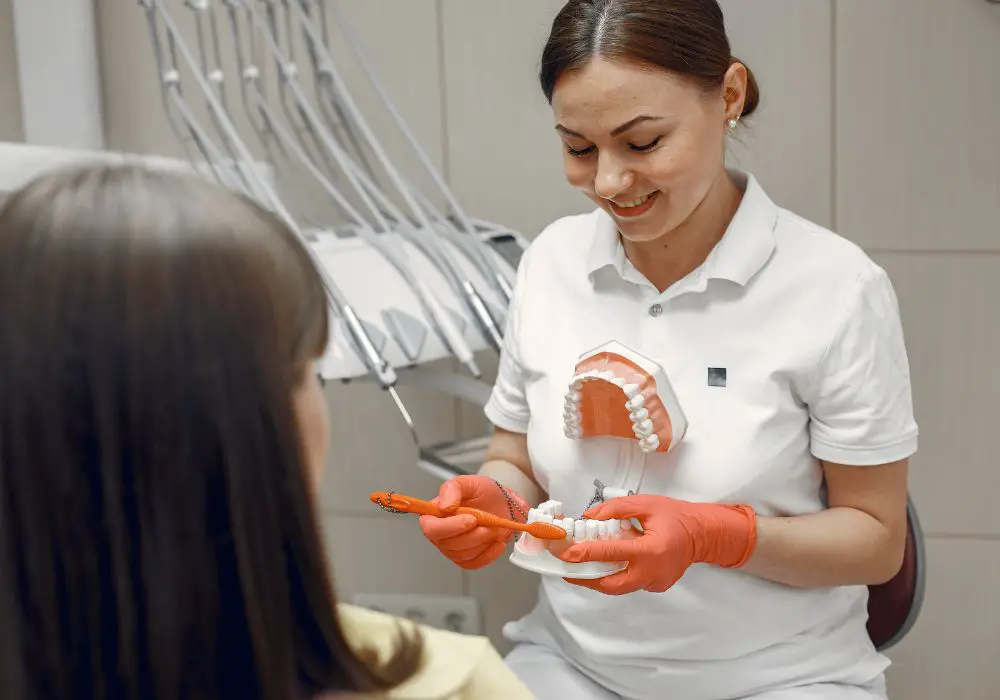
While temporary adhesion methods can tide you over for a day or two, you should have a dentist accurately re-attach the tooth for optimal longevity and function.
See a dentist right away or call for emergency assistance if:
- The re-glued tooth falls out again soon after repair efforts
- You experience any mouth pain, swelling, bleeding, or irritation around the tooth
- You accidentally swallow or aspirate the tooth into your airway
- The detachment resulted from a dental injury, trauma, or knocked out teeth
- Your dentures no longer fit properly due to the missing tooth
Let your dental provider examine the detachment cause, ensure proper tooth alignment, and make any necessary denture or implant adjustments or replacements. Don’t delay seeing a professional.
Professional reattachment techniques
Dentists have specialized equipment, materials, and methods to firmly re-adhere or replace loose fake teeth – far superior to regular household glues.
Tooth preparation
The detached tooth is thoroughly cleaned and sanitized. Plastic resin or porcelain surfaces are etched using an acid solution to create microscopic rough grooves for better adhesive bonding.
Adhesives used
Oral-safe professional dental adhesives specially created for dentures are precisely applied to the prepped tooth and bonding location. Dental cements, acrylics, urethanes, or optical resin bonding agents chemically durable in the oral environment are used.
Light curing
A high-intensity dental curing light is often used to rapidly harden and set optical bonding agents or dual-cure cements to ensure a tight, gap-free bond around the tooth.
Occlusion adjustment
The dentist carefully adjusts the bite alignment or occlusion after bonding so that force is distributed evenly across denture teeth when chewing and speaking.
Further appliance repairs
If the base denture or implant itself is faulty, damaged, or ill-fitting, the dentist will also adjust, reline, or remake the appliance for a more secure and comfortable fit.
Seeing a dentist ASAP for professional reattachment of a dislodged fake tooth is vital for proper mouth function, preventing tooth loss or aspiration, and avoiding worsening damage to dentures. Don’t delay prompt dental treatment.
When denture remakes or replacements may be needed
If loose or lost fake teeth become a chronic problem due to ill-fitting dentures, your dental provider may recommend a remake or replacement. Reasons you may need denture remakes or replacements include:
- Repeated detachment of multiple teeth
- An old set of dentures no longer fitting properly
- Worn denture materials and degraded bonding
- A marked change in oral anatomy affecting denture fit
- Persistent denture rocking, chafing, or poor retention
- Frequent fracture or breakage of denture base or teeth
Don’t endure loose, broken, or uncomfortable dentures. See your dentist to discuss options like relines, rebases, or completely new dentures if needed. Many dental insurance plans cover partial costs.
Teeth reattachment do’s and don’ts
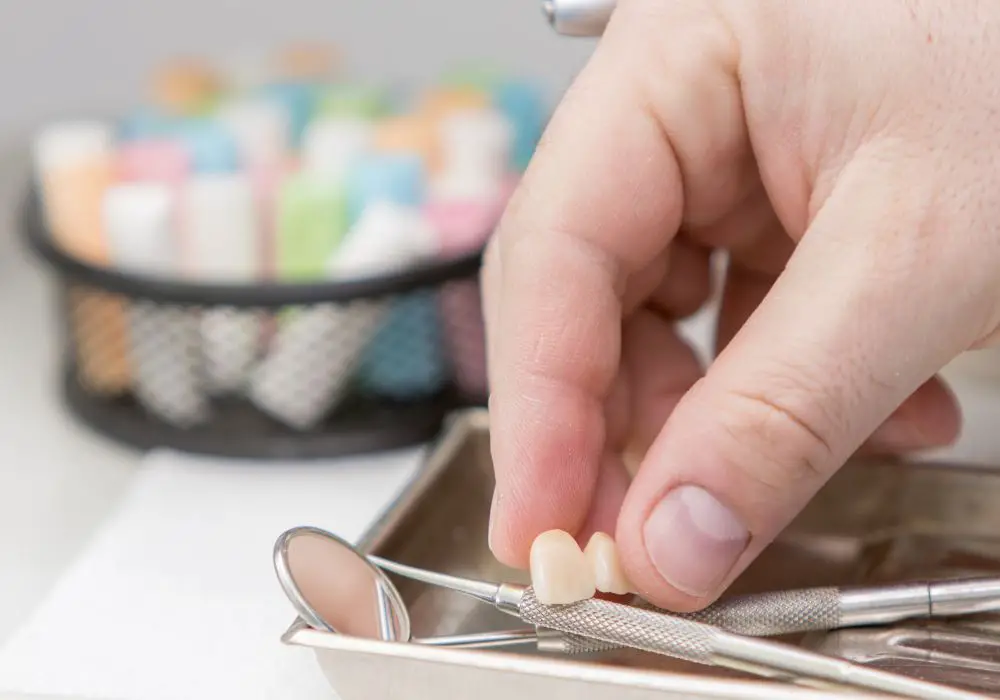
When re-adhering a loose fake tooth at home temporarily:
DO:
- Use only oral-safe dental adhesives like denture creams
- Rinse and thoroughly dry bonding surfaces first
- Press detached tooth firmly into correct alignment
- Remove any excess adhesive before setting
- See a dentist ASAP after for proper repair
DON’T:
- Use household super glues inside your mouth
- Get adhesive on your gums or cheeks
- Try to chew or bite down on the repaired tooth
- Leave excess adhesive around the repaired tooth
- Delay seeing a dental professional
Carefully following guidelines for safe adhesive use, application techniques, and avoiding pressure on repairs will give the best temporary results until your denture or implant can be fixed properly.
Frequently Asked Questions
Is super glue toxic if I accidentally swallow a little re-gluing a tooth?
Some household super glues meant for non-dental use contain potentially harmful chemicals like cyanoacrylate or cyanide. However, oral-safe dental super glues approved for dentistry contain inert, non-toxic compounds that you can safely ingest in small amounts. Still, try to avoid swallowing any glue and call your doctor if concerned after accidental ingestion.
Can I use hot water to temporarily re-adhere a loose tooth?
Do not use hot water to try and re-attach a fake tooth. Excessive heat can warp, distort, or damage the shape and color of plastic resin or porcelain teeth. It can also damage the denture base material. Only use room temperature or gently warm water to carefully rinse loose teeth before re-gluing. Allow any adhesives used to cure naturally at room temperature.
Is it possible to permanently glue a fake tooth at home?
No, household glue fixes are always temporary. The high-performance bonding agents and cements used in dental offices are specially engineered for the warm, moist environment and forces inside the mouth. See your dentist promptly for permanent reattachment and replacement of any detached fake teeth using professional dental materials and equipment.
Should I clean my dentures differently after a tooth repair?
Yes, be very gentle when cleaning your dentures after temporarily gluing back a tooth. Avoid using abrasive denture cleaners or vigorously brushing the repaired area which can re-loosen the delicate temporary adhesive bond. Use mild, non-abrasive soaps and gently brush. Take extra care to keep dentures and your mouth clean during the fix period when risk of damage is higher.
Can I use wax to make a temporary fake tooth?
While dental wax can help anchor a real detached tooth back into place briefly, it cannot adequately serve as an entire makeshift tooth replacement. Wax is not strong enough for chewing and will quickly wear down with eating or talking. See your dentist promptly to properly replace any missing, broken, or lost denture teeth for correct fit and daily denture function.
Conclusion
Losing a fake tooth can certainly be upsetting and disrupt daily functions like eating and speaking. However, loose denture teeth, implants, and crowns can often be temporarily re-adhered at home in an emergency using proper denture adhesives like dental creams or wax. For best adhesion results, thoroughly clean and dry bonding surfaces, carefully select an oral-safe adhesive, use minimal amounts, firmly press into the correct place, remove any excess, and avoid chewing pressure on the repaired tooth. These emergency repairs typically last 1-2 days at most before you must see a dentist for professional permanent reattachment or replacement and to check for any needed adjustments or repairs to your denture or dental implant. With good technique and materials, you can likely safely glue a detached fake tooth back into place very temporarily until your dental appointment.

